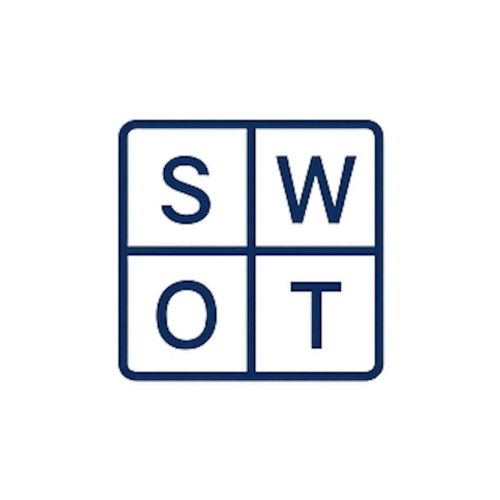Knowledge Base
Search our knowledge base.
OKRs — The Good, the Bad, and the… Oh My God, It’s a Disaster!
Published on 28 May 2025
Why do OKRs frequently fail? OKRs promise goal alignment. But when implemented in isolation, they often lead to fragmented execution, reinforced silos, and delayed recognition of interdependencies — a silent killer of cross-functional outcomes.
There is a systemic design flaw in how organizations misuse the framework: namely the disconnect between goal alignment and executional coherence across departments.
Sengi as a Strategic Operating System
Published on 18 May 2025
Why strategy needs more than tools — it needs rhythm, structure, and a shared system of alignment. What Is a Strategic Operating System? In most organizations, strategy lives in documents and slides — built with care, but quickly outdated. Execution, meanwhile, runs on project tools, OKRs, and team meetings. The space between them? Often disconnected. […]
What Makes Sengi Different?
Published on 18 May 2025
What Makes Sengi Different? Sengi is a strategy execution platform built to bridge the gap between planning and doing. By connecting strategic design, departmental execution, and performance measurement in one cohesive environment, Sengi turns strategy into results. Here’s what sets it apart. What is Sengi? Sengi is an all-in-one strategic planning and execution platform designed […]
How to break down organizational siloes
Published on 16 May 2025
Introduction Organizational silos refer to the isolation and lack of communication between different departments or teams within a company. This problem is a common issue in many organizations that can lead to decreased productivity, reduced innovation, and low morale among employees. While there are benefits to functional decomposition within departments and teams, working in silos […]
Confused terms series
Published on 07 October 2024
I. Mission vs Vision Mission – also known as mission statement – describes the purpose of the organization in terms of the key activities it performs and the benefits it aims to provide for its customers. The mission can change over time but that frequently implies a significant change in what an organization does and […]
How can we improve alignment, transparency and clarity?
Published on 31 August 2024
Amid the numerous conversations happening across channels like Slack, Teams, WhatsApp, and phone calls, key information can easily be overlooked or misinterpreted. A straightforward question about your company’s vision, mission, or strategy can sometimes expose unexpected gaps, confusion, or even a disconcerting “I don’t know.” While it’s well recognized that consistent communication is vital, merely […]
Is your business encountering challenges? Here’s a practical guide to support recovery.
Published on 02 September 2024
Given the present economic conditions, businesses frequently encounter crises and challenges. Whether facing an economic downturn, a disruptive market shift, or unexpected internal challenges, managing through these difficult times requires more than quick fixes. For business owners and managers, strategic planning becomes essential in providing a clear approach to regroup, refocus, and emerge stronger. The […]
The global start-up and scale-up scene
Published on 02 September 2024
INDUSTRY OVERVIEW – 2024 As we step into 2024, the global start-up and scale-up ecosystem continues to evolve, offering both exciting opportunities and significant challenges. This comprehensive overview explores the current state of the industry, drawing on key statistics, emerging trends, challenges, and positive developments shaping the business environment. Key Statistics Start-up Creation The start-up […]
Business owners’ top New Year’s resolutions made possible with SengiSolutions
Published on 31 August 2024
The beginning of a new year often brings with it a wave of resolutions, plans, and expectations. For managers and business owners, it’s a time to envision growth and achievements. Let’s walk through some common resolutions of business people and explore how leveraging a tech strategy platform can turn their aspirations into tangible achievements. Otherwise, […]
A comprehensive glossary of key business terms
Published on 31 August 2024
The post offers an understanding of essential business terms to foster effective communication and informed decision-making within an organization. These include benchmarking, business model canvas, competitive analysis, competitor, goal, initiative, KPI, metric, mission, objective, risk, ROI, scalability, stakeholder, strategic approach, blue and red ocean strategies, strategic driver, strategic pillar, strategic profile, strategic roadmap, and vision. Acquiring a firm grasp of these terms aids professionals in facilitating clear dialogue and avoiding potential misunderstandings.
Key aspects of strategic clarity
Published on 31 August 2024
Many organizations struggle to articulate and communicate a clear vision and mission, hindering their ability to formulate effective strategy. The consulting company, Sengi, illustrates a critical approach by first defining an organization’s mission and vision, followed by strategy formulation and setting concise goals. Sengi distinguishes between strategy and tactics in business and emphasizes strategic pillars and setting meaningful, aligned goals to improve execution.
Alignment or Misalignment by design
Published on 19 May 2025
Organizations often adopt goal-setting frameworks like OKR to create alignment and synergy among departments. However, this process can inadvertently result in a misalignment by design, where isolated departments set objectives that inadvertently counteract each other, even when they seemingly align with overall organizational goals. To avoid this, initiatives should be proposed, implemented, and evaluated as cross-departmental projects, creating genuine alignment between teams and coherent progress towards organizational aims.
Understanding competition and market positioning: A guide
Published on 31 August 2024
A company’s understanding of its competitive landscape is critical for success, which involves identifying its unique features, competitors, and factors influencing consumer preference. The competitive analysis evaluates the strengths, weaknesses, and dynamics between a company and its competitors using various factors like price, product variety or a mobile app. These factors, scored on a 0-5 range, form a Strategic Profile that graphically represents a company’s relative strategy focus against competitors. This profile aids decision-making and strategic alignment, necessitating regular assessment as the competitive landscape is continuously changing.
The importance of decision-making in strategic planning
Published on 31 August 2024
Strategic planning is crucial for defining an organization’s direction and resource allocation, particularly for start-ups and scale-ups. It facilitates alignment, resource optimization, risk management, and adaptation. Effective decision-making is central, leveraging both explicit and implicit decisions. Thus, it’s advisable to use data-driven decisions, collaboration, scenario planning, clear communication, risk assessment, agility, and continuous learning. Mastering effective decision-making enables organizations to navigate the business landscape, adapt to changes, and achieve strategic objectives.
Enhancing organizational performance through mature strategic initiative planning
Published on 02 September 2024
Many organizations struggle to translate vision into results due to invisible initiatives, poorly-defined endeavors, and conflicting efforts. To navigate these issues, firms should adopt a mature process for proposing, reviewing, approving, and monitoring strategic initiatives. This ensures initiatives are visible, clearly outlined, and aligned with the organization’s goals, mitigating redundancy and fostering progress. This systematic approach aids organizational success and is indispensable in today’s dynamic business context.
Understanding and managing business risks
Published on 31 August 2024
Business risks are unavoidable but understanding, modeling, mitigating, and managing them can position an organization for long-term success. This involves assessing potential threats, developing mitigation strategies, and monitoring residual risks. It’s a continuous process that requires reassessing risks and updating strategies. Effective risk management goes beyond avoidance, involving calculated risks for growth and competitive advantage, ultimately fostering resilience and innovation.
Understanding OKR’s disadvantages and choosing a better approach
Published on 31 August 2024
The OKR (Objectives and Key Results) framework is used to set and measure goals in organizations, but has disadvantages which can lead to misalignment, departmental silos and confusion. These stem from encouraging insular department-level goals, poor integration with wider organizational context, and ambiguous differentiation between objectives and key results. An alternative is the Sengi tool, which encourages shared goals across departments. It aligns with the broader terminology of long-term abstract goals and time-bound, measurable objectives, enhancing clarity, cross-departmental synergy, and alignment towards organizational mission.
Empowerment – The value of relying on a strong team
Published on 31 August 2024
Empowerment in remote work situations is crucial and can be achieved by setting clear, company-wide goals to maintain alignment. These include establishing strategic pillars, developing a business model canvas, creating a unique strategic profile, and reinforcing outcome-focused thinking. To support this, cross-departmental collaboration and accountability are essential. Enhancement of employee productivity, autonomy, and satisfaction can be achieved by using tools like Sengi, which promotes strategic planning and encourages collaboration.
Understanding differentiation and its importance in business strategy
Published on 31 August 2024
A successful differentiation strategy relies on strategic pillars, clear business models, and competitive analysis. Businesses should focus on core areas like product quality and customer service, represent key elements of their business visually, and understand competitor strengths and weaknesses. Sengi software supports these needs, providing in-built differentiation features, including success metric tracking, remote working management, and goal setting, helping businesses compete and achieve long-term goals.
Breaking silos: Using shared goals and cross-department initiatives to break them
Published on 31 August 2024
Organizational silos refer to the lack of communication within a company, leading to decreased productivity, innovation, and employee morale. While functional decomposition allows for task specialization and improved management, it may exacerbate silos. To break down these silos, strategic planning, shared goals, and cross-departmental initiatives are necessary. Currently popular goal-setting frameworks like OKRs can unintentionally foster more silos, hence tools like Sengi, which emphasize shared goals and cross-departmental initiatives, effectively align different parts of an organization towards a common objective.
Understanding organizational agility
Published on 31 August 2024
Organizational agility pertains to an entity’s capacity to promptly and efficiently adapt to shifting situations and market conditions. It is critical for survival in a swiftly changing business environment, promotes innovation, and improves employee engagement and satisfaction. Tools such as strategic planning, which encompasses strategic pillars, drivers, organization-wide goals, and cross-departmental initiatives, can enhance organizational agility, fostering a robust culture capable of tackling change and uncertainty.
Get a clear view of all your strategic initiatives across departments
Published on 31 August 2024
Ineffective tracking of cross-departmental initiatives presents significant challenges in businesses, leading to inefficient resource allocation, lack of visibility, reduced collaboration, missed opportunities, and inaccurate data. Poor tracking can cause delays, cost overruns, and incorrect decision-making. Recognizing these hurdles is vital for overcoming them.
How to optimize strategic planning for SMEs: Leverage the power of modern platforms
Published on 31 August 2024
Small to medium-sized enterprises (SMEs) often struggle with strategic planning due to limited resources. Strategy planning tools can remedy this by providing centralized data management, enhancing collaboration and assisting goal identification and prioritization. Such tools empower SMEs to make data-driven decisions, enabling growth and competitive advantage in today’s business landscape.
Metrics vs. KPIs – What’s the difference?
Published on 02 September 2024
Metrics and Key Performance Indicators (KPIs) are crucial to business performance analysis, albeit, serving different functions. Metrics are quantitative, broad, reflective, and objective data points tracking various business activities. KPIs are strategic, fewer in number, predictive, and customized indicators linked to organizational objectives. Thus, metrics provide data on diverse business aspects while KPIs measure progress towards goals. Both are essential for informed decision-making.
The art of smart market differentiation
Published on 02 September 2024
Differentiation is crucial for success in today’s competitive business environment. Imitating competitors may feel safe but it rarely leads to success. Unique value propositions, a strong brand identity, innovative growth, customer loyalty, and market leadership are the rewards of differentiation. Differentiation is not contradicting competitors, but finding a unique path and meeting the true needs of customers.
Inspired by nature: The origin of Sengi
Published on 31 August 2024
“Sengi”, a business that operates in the field of software as a service (SaaS), is named after the Rufous Sengi or the East African long-eared elephant-shrew—a highly agile animal, known for its strategic planning abilities that help it survive challenging environments. Sengi applies the creature’s nature-inspired wisdom to help organizations plan, adapt, and excel, embodying strategy and agility for success.
What can the Business Model Canvas offer?
Published on 02 September 2024
The Business Model Canvas, a strategic tool for businesses, consists of nine blocks to provide comprehensive insights into your operations. It offers strategic clarity, holistic understanding, identification of weaknesses, enhanced communication, and adaptability. It’s a valuable resource for both young entrepreneurs and established companies striving for successful outcomes in an ever-changing business environment.
Breaking down departmental silos: A path to enhanced collaboration
Published on 31 August 2024
Departmental silos in organizations inhibit the free flow of ideas and information, leading to inefficiencies, cultural divides, and slow decision-making. Breaking down these silos requires a culture shift towards collaboration, cross-departmental teams, shared goals, and ample technology for seamless communication. As these obstacles are dismantled, enhanced communication, swift decision-making, and a robust organization emerge.
Strategic pillars: A framework for guiding organizational direction
Published on 24 May 2025
Strategic pillars are foundational principles that support an organization’s long-term strategy, providing stability and direction. They ensure clarity of purpose, align teams, set priorities, contribute to long-term vision, and foster adaptability. Examples include customer excellence, operational efficiency, technological innovation, market expansion, and economies of scale. By embracing strategic pillars, organizations build the foundation for future success.
The role of drivers in organizational strategy
Published on 31 August 2024
Drivers, crucial internal and external factors, influence an organization’s decision-making and strategic direction. They often arise from stakeholders’ needs and expectations, market conditions, and regulatory changes. Similar to strategic pillars, drivers guide areas of focus and goal setting. The main difference is that strategic pillars are derived from the specific strategy of an organization, while drivers relate to industry-specific influences. Drivers thus help organizations align their initiatives with their mission, vision, and long-term success.
Blue Ocean vs. Red Ocean: Navigating through business strategies
Published on 31 August 2024
Blue Ocean and Red Ocean encompass two different business strategies. The Blue Ocean focuses on creating unique market spaces through innovation and value creation, reducing competition and potentially expanding the market. On the other hand, the Red Ocean strategy is defined by intense competition in established markets, targeting capturing a larger market share and with limited scope for innovation. The choice between these strategies is based on factors like the business’s goals, customer needs, risk tolerance, and its industry’s competitive landscape.
Have you filled your organization’s mission, vision, and strategic approach?
Published on 31 August 2024
The importance of defining and aligning business mission, vision, and strategic approach is often undervalued. The mission states the core purpose, the vision pictures the end aspirations, and the strategic approach outlines the plan to achieve the vision. Their alignment provides clarity and direction, mitigates risks, aligns efforts towards goals, and helps overcome challenges. Regular reviews of these concepts ensure readiness for unforeseen business situations.
What is a strategic initiative?
Published on 31 August 2024
A strategic initiative is a project aligned with a firm’s overall strategy, targeting specific, high-impact goals. Unlike routine operations, these initiatives concentrate on long-term objectives and demand significant resources. They can range from product launches to improving customer experience. Strategic initiatives necessitate comprehensive planning, strong leadership, effective execution, departmental cooperation, and are adopted after thorough management review. Proper strategic planning facilitates greater focus, accountability, alignment, collaboration, and optimal resource allocation.
The importance of alignment in business management
Published on 31 August 2024
Alignment in business management is vital as it ensures all parts of an organization work towards the same goals. This practice brings clarity to objectives, fosters accountability, boosts efficiency and communication, maximizes resources, and facilitates a feedback loop for strategy evaluation. Essentially, alignment fuels and guides businesses towards achieving their goals.
Understand your market using the power of Competitive Analysis
Published on 31 August 2024
Competitive analysis is vital in business for comprehending market dynamics, identifying opportunities, and informing strategic decisions. By monitoring rivals, businesses can uncover untouched areas for innovation, understand their strengths, weaknesses, make informed decisions about marketing and pricing, and proactively mitigate potential risks. Regularly performing competitive analysis enables businesses to stay ahead and prosper in a constantly changing marketplace.
Goals, objectives and the missing link
Published on 02 September 2024
Goals and objectives are distinct, paramount concepts in business planning. Goals are broad, high-level aspirations that direct businesses, while objectives are SMART (Specific, Measurable, Achievable, Relevant, Time-bound) targets that translate goals into actionable steps. Initiatives, the practical steps to fulfil goals, are a vital link between goals and objectives. It’s important to have the correct initiatives to reach objectives and ultimately realize business goals.
What is the difference between Vision and Strategy in business?
Published on 31 August 2024
A vision is an inspirational long-term statement detailing what an organization aspires to be, while a strategy is the practical action plan depicting how the organization will achieve its vision. To succeed, organizations need both; a vision gives direction, whilst a well-formulated strategy provides a path to realization. A vision without a strategy is merely a dream, and a strategy without a vision is aimless.
10 common mistakes to avoid in business management
Published on 31 August 2024
Running a business presents both opportunities and challenges. Common mistakes like lack of planning, ignoring market research, overlooking financial management, neglecting team building, procrastination, disregarding legal matters, insufficient marketing, underestimating competition, not measuring results, and overexpansion can lead to business failure. Learning from these mistakes can help entrepreneurs navigate business hurdles, increasing their chances of success.
Methodical vs. Ad-Hoc: What approach are you taking?
Published on 31 August 2024
While some small business owners may assume formalism and structured methodologies are for larger corporations, a methodical approach can enhance their agility, making them more resilient. Benefits include ensuring clarity of vision, efficient resource use, improved collaboration, and adapting effectively to unpredictable market conditions, thus, paving a path to growth.
Why are clarity, planning, and alignment critical in business management
Published on 31 August 2024
Business owners who prioritize ad-hoc decision-making over strategic planning risk many challenges. These range from lack of direction, inefficient resource allocation, disorganized teams, and missed opportunities, to poor communication, lack of adaptability, wasted resources, and increased risk. For businesses to be successful, flexibility and adaptability must complement, not replace, thoughtful planning, management, and alignment.
Powerful Tools and Reports
Sengi offers powerful visualizations and reports so everyone can easily understand and get behind the corporate strategy.

Strategy Tree
Visualize how your entire strategy connects—from vision and mission down to goals and KPIs. Sengi’s Strategy Tree makes alignment clear, traceable, and actionable across the whole organization.

Competitive Landscape
Map your competitive environment with precision. Define competitors, rank them on key factors, track moves, and react strategically—all within Sengi’s integrated intelligence tools.

Business Model Canvas
Capture and evolve your business model in one structured view. Sengi’s interactive canvas links seamlessly with your strategic goals, making model thinking part of active strategy execution.

KPI Dashboard
Monitor what matters in real time. Sengi’s KPI Dashboard keeps your performance indicators organized by strategic focus—so you always know how well your strategy is working.

Balanced Scorecard
Auto-generated from your strategic inputs, Sengi’s Balanced Scorecard brings structure and clarity to performance tracking—spanning financial, customer, internal, and learning dimensions.

Strategic Profile
Plot your market position with Blue Ocean tools. Compare your value curves with competitors, identify gaps, and sharpen your differentiators visually and strategically.

Initiative Alignment
Every initiative in Sengi is anchored to a goal, pillar, or driver. This ensures strategic alignment from planning to execution—no more disconnected projects or wasted effort.

Strategy Roadmap
Plan your execution journey with clarity. Sengi’s Strategy Roadmap shows initiative timelines, dependencies, and milestones—making long-term execution both visible and manageable.

Risk Management
Identify, evaluate, and manage strategic risks in a centralized view. Sengi’s Risk Management module helps you stay ahead of uncertainties by linking risks directly to goals and initiatives—so you can mitigate threats before they impact execution.

Issue Management
Capture and resolve roadblocks as they arise. With Sengi’s Issue Management, teams can log, track, and escalate strategic issues in real time—ensuring transparency, accountability, and fast resolution when it matters most.

SWOT Analysis
Assess your strategic position with clarity. Sengi’s SWOT tools allow you to visualize strengths, weaknesses, opportunities, and threats in one connected view—anchoring your plans in real-world context and helping teams stay strategically grounded.

Milestone Completion
Track key moments of progress with confidence. Sengi automatically reflects milestone completion across your roadmap, giving teams and leaders a clear sense of momentum and achievement—while surfacing delays that require attention.
Sengi offers all these features and more.
